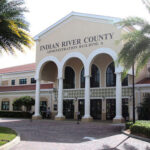The untold story of the Dodgertown Spring Training negotiationsBy Ian M. Love, Managing Editor
The Baltimore Orioles are headed to Sarasota, and Vero Beach will never again be the Spring Training home of a major league baseball team. But could last year’s negotiations have brought the Orioles to Dodgertown to replace the Los Angeles Dodgers? Were the Orioles ever serious about Vero, or were they always leading Vero on while trying to leverage a better deal elsewhere?
At last, the detailed story of the negotiations can be told. VeroNews.com obtained the first look at hundreds of pages of confidential documents and e-mail exchanges surrounding the dealings between the negotiators representing Indian River County and the Orioles. Here is the inside story of what really happened.
In Part 1 we explored how the Orioles and the County first got together to talk about Dodgertown.
Part 2: The Devil IS in the Details
Part Three tomorrow: The deal Dies






